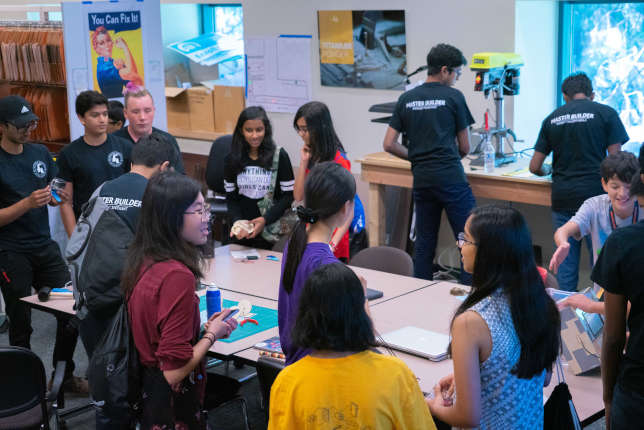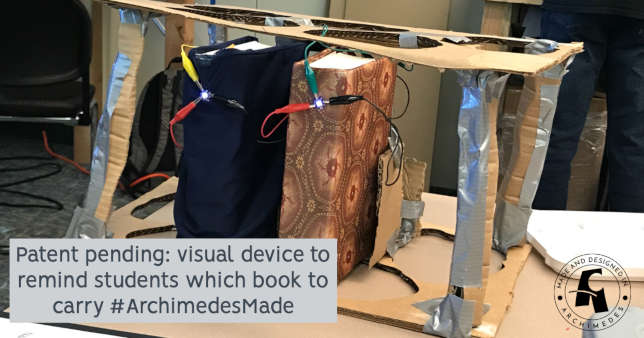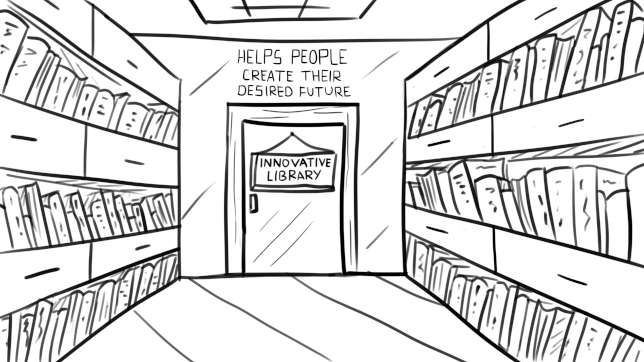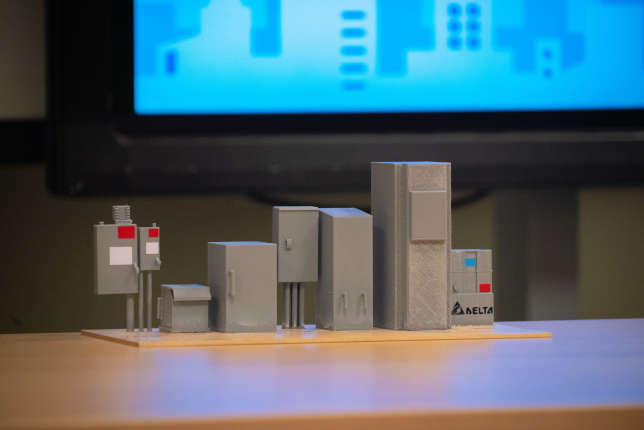Bringing the Library into the 21st Century
A Silicon Valley library’s quest to ignite innovation
- By Parker Thomas, Cindy Chadwick
- 12/11/19

Managing life and work or school requires a careful blend of determination and creativity, no matter what age you are. When you’re 15, your journey involves remembering which book to take for each class.
That’s why Matthew Chandler invented his own book-reminder device at the makerspace within the Fremont Main Library. He used a microprocessor and multicolor LEDs to build his system. It runs off an internal timer and changes the colors of the lights each class period to indicate which book to take.

It may be tempting to dismiss Matthew’s innovation as a simple prototype, except for the fact that the creative problem-solving approach he used to build it happens to be exactly what Silicon Valley employers say they are looking for.
“I can teach people how to run the machines. I need people that can solve the problems when things go wrong. That’s really hard to find.” That’s what Brian Paper of Bay Area Circuits said in our listening tour that consisted of dozens of interviews with HR directors, CEOs, managers, and workers at tech companies and advanced manufacturing firms in Fremont, Calif.
Joshua Weiner, founder and CEO of SepiSolar, agreed noting “every single one of the industrial solar systems we design is different. The only constant is that every project requires new learning. I can tell within three days if a designer has the creative problem-solving skills we need.”
Throughout this listening tour, it became apparent to us that companies are looking for innovators — which we define as creative problem solvers who embrace lifelong learning and stride toward their desired future. The demand for a competent and innovative workforce is at an all-time high due to new technologies advancing traditional industries such as manufacturing – an industry that employs nearly 30,000 workers in Fremont alone.
Now, the big challenge is establishing a place that teaches individuals how to innovate and problem solve in preparation for today’s workforce. Students need learning experiences that challenge them to “learn how to learn” by developing creative approaches to unknown or unsolved challenges. They need to be allowed to fail, iterate, learn more, and provide a new solution.
At the beginning of our journey, schools seemed to be the logical place to start. But adults need these jobs and skillsets too. After interviewing students, parents, and other members of the community, it became clear that the library is one of the few remaining public institutions that communities seem to trust when learning and trying new things.
Every day, people across the nation ask librarians about issues ranging from health to housing and employment, simply because librarians are trusted guides into unfamiliar worlds. In short, libraries are institutions of knowledge — not just book repositories.
For example, frequent users of the Fremont Main Library’s children’s programs expressed that they bring their kids specifically because they trust the library to offer enrichment that they can’t receive at school. One mother said she lost count of the number of times she brought a hesitant 10-year-old boy to a library program and then left with an enthusiastic participant eager to learn more.

Overall, this level of community trust has framed libraries to be a perfect on-ramp for acquiring new experiences and becoming innovators.
So after six months of listening, prototyping, and planning, we ventured to meet tech companies’ demand for innovators by opening a makerspace full of laser cutters, 3D printers, a new computer lab, and hand tools in the Fremont Main Library.
But our dream is bigger. We want this space to be a place where our community comes together to define and practice the skills needed to thrive in today’s world — while making some cool stuff along the way, of course.
In partnership with engineering teacher and makerspace extraordinaire Kristin Berbawy, the library organized a lineup of free summer classes that gave students a space to hone their problem-solving skills. Using unfamiliar software and hardware to create wearable electronics and 3D printed designs, these students worked through a number of trials and errors before deriving solutions that met their desired outcomes.
Additionally, two Fremont solar companies, SepiSolar (part of our original listening tour) and Gridscape, brought real life design challenges to the makerspace and gave students two weeks to develop and present solutions. On August 16, three students presented their designs to company executives.
“I was genuinely impressed by the ideas and problem-solving capacity of the students, some who were as young as 11. Their solution was very similar to the one our engineers created,” SepiSolar’s Joshua Weiner said.

Students learned a great deal as well.
“We were able to test out the new machines while learning how to problem solve, ask questions, and work around failures. I am no exception,” said Christina Qin, one particularly inspired teen who reflected on her experience at the library’s makerspace.
Far from the typical tutorials or step-by-step slide shows, the makerspace allowed Christina and others to experience a new type of learning. Students were given free rein to understand the underlying mechanics necessary for creative derivation and problem solving.
“Not being able to explore or have the freedom to express one’s own creativity kills any enthusiasm for learning and fails in teaching students how to make their own ideas come to life. It skips the process of iterative design and the acceptability of failure,” Christina said.
Although Christina faced “setback after setback” while creating her 3D printed bird feeders and laser-cut keychains, at the end of the summer she gained the problem-solving skills so many employers are seeking.
Our national K-12 education system was formed over 100 years ago with a goal to prepare students for more uniform, industrial careers. As technology continues to advance industries, the necessary caliber of understanding required by the employees staffing these industries must progress in lockstep. Our city’s library makerspace is just the first step in meeting this increased demand for creative problem solvers. It models the type of education that will be necessary to navigate the intersection of technology and workforce development moving forward.